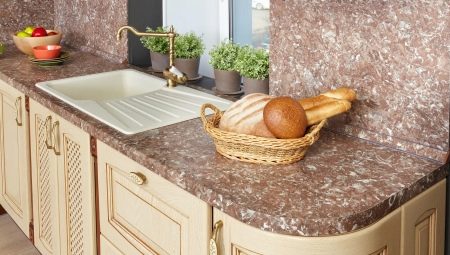The choice of dimensions of the countertop often depends on the tasks for which it will be used in the future. In the kitchen, this is a work surface where mechanical action is continuously carried out. For this reason, the width of the element is selected different.
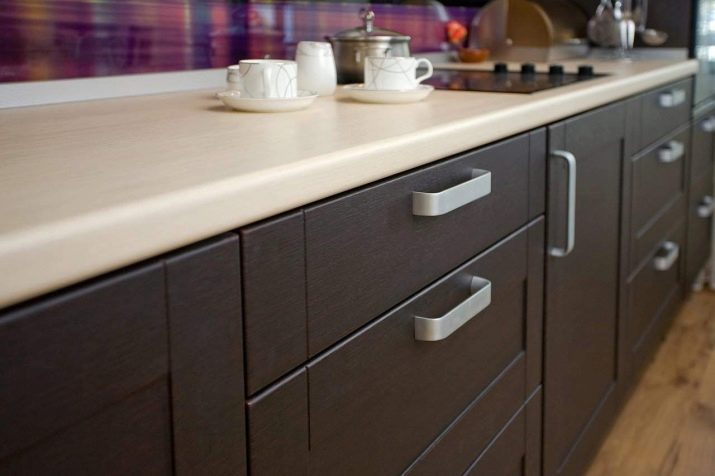
What determines the width and why is it important?
Width is an extremely important parameter of the countertop in the kitchen. The first thing that determines the dimensions of the countertop is materials used for its manufacture. Equally important criteria - total area of the kitchen and dimensions of the kitchen set: in kitchens with a large area, the countertop can protrude beyond the headset at a fairly decent distance, but in small rooms it will not be possible to realize this.
In addition, the width of the working surface for the kitchen is chosen solely taking into account personal preferences - as a rule, the hostess herself sets them, since it is she who spends the most time in the kitchen.
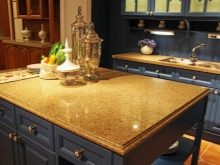
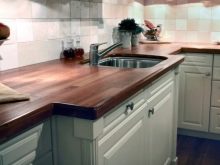
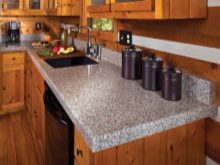
The importance of the width of the countertops can be explained by a simple example: sometimes, for ordinary cooking, the standard width of the working area is not enough for verification. If you cook a dish, several stages of preparation are assumed, and, consequently, an abundance of kitchen utensils. Therefore, a width of 80 cm will be the most suitable option. Thus you will receive a really functioning work surface that does not need a large space.
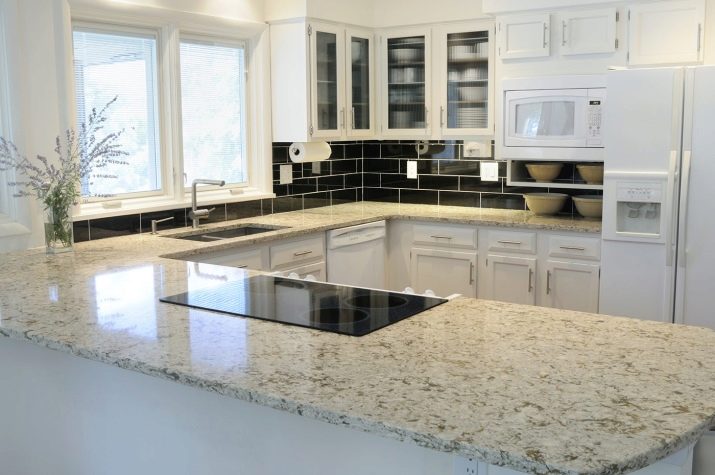
Which happens?
The width of the countertops in the kitchen can have both standard and non-standard sizes.
Standard metrics
Technically it is believed that the standard width of the working surface is 60-65 cm.This size makes it possible to construct lower drawers with a depth of about 500 mm. They will be quite spacious and comfortable to eat. It is undesirable to reduce the width of the working surface, since in this case part of the usable area of the lower drawers is lost, and the working area of the surface itself is also reduced.
It should be noted that material consumption when reducing the width will be approximately the same. In other words, leaving the previous design and giving the same money, you will lose part of the usable area for the kitchen.

The increase in width, on the contrary, will create the inconvenience of excessively deep lower drawers, which are suitable, perhaps, for a kitchen with a huge footage. Therefore, before you beat the standard size, you should think carefully.
By and large experts advises a maximum working surface width of up to 800 mm. Such a countertop will have the required functionality and will not need auxiliary supports, since the wider the tabletop, the less load it can withstand. This is due to the fact that the countertop plate is fixed only from the sides, and in the center it bends above the surface.
Standards have developed on the basis of the most common sizes in the same type of apartments. Manufacturers take these values as a basis in the manufacture of furniture. But individual companies have their own line of standards, although it does not differ much from the generally recognized one.
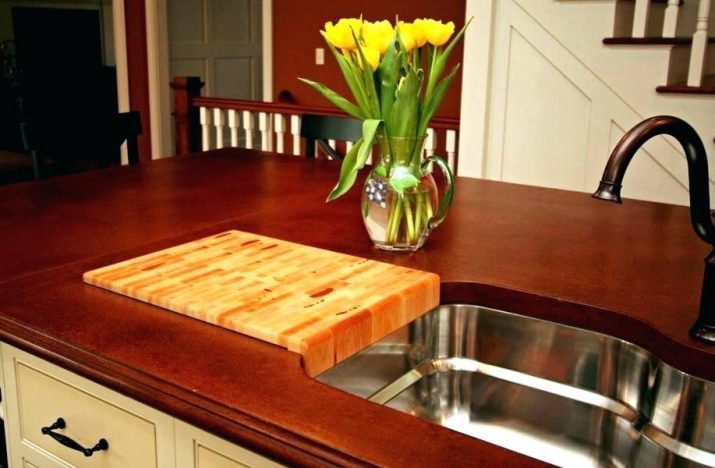
Each of the materials used by manufacturers contains its own standard sizes, and taking them as a basis, they establish the minimum or maximum dimensions of the countertop.
Laminated MDF and particleboard (postforming)
The sheet has a standard:
- width - 600 and 920 mm;
- maximum length - 3650 or 4100 mm;
- thickness (height) - 28-38 mm.
Laminated boards are a particularly common material due to their reasonable cost and relatively good quality, although the service life is not very long.
Non-standard are countertops, the width of which is 700, 800, 900 or 1200 mm.


A rock
A countertop made of this material will have the following dimensions:
- in width - 600 mm;
- by lenght - 750/800/2400/3000 mm;
- height - from 40 mm.


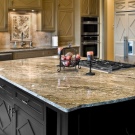
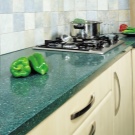

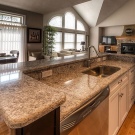
Natural wood
The dimensions of the working surface of the array are as follows:
- width - from 600 to 1000 mm;
- length - from 1000 to 3000 mm;
- height - up to 40 mm.


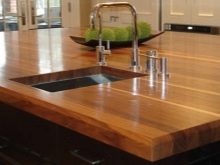
Non-standard
However, one should not think that all items of kitchen furniture are produced according to uniform standards.
Furniture manufacturers create them on their own depending on the standard sizes of materials, as mentioned above, and often try to pass it off as an exceptional advantage.
Another question is when it is necessary to move away from acceptable parameters for other reasons.
Often, non-standard work surfaces in width are made according to the size of the client, but not more than 950 mm, table plates (without bending) no more than 1100 mm, maximum length 3050 mm.
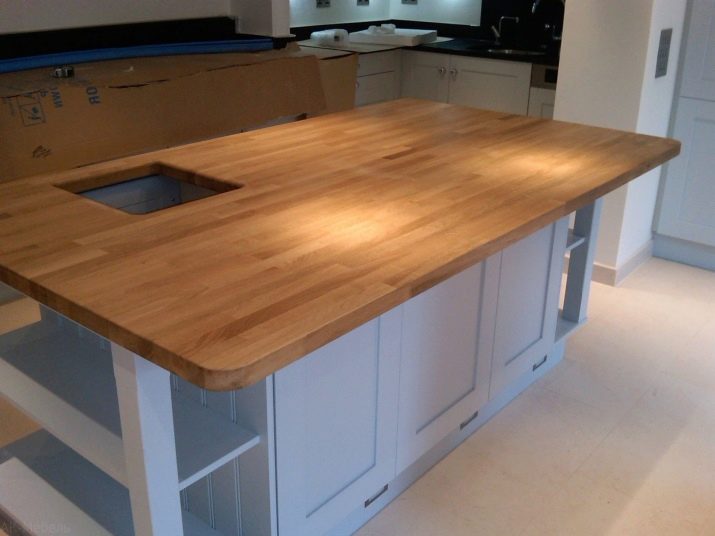
Room Features
The first thing designers face is pipes. It is not always possible to lower them into the area of the legs or to hide behind the GCR. Pipes need a width extension of approximately 650 mm. This also needs to be included and power sockets.
There are other obstacles that cause various protrusions - ducts, heaters and window sills. Here the solution to the problem would be drunk in furniture.
But if the box is located in the area where the equipment, sink or retractable elements are located, this cannot be done. It must be warned that the maximum width, when approaching the countertop is permissible from only one edge, can be no more than 70 or 90 cm. Otherwise, it will be difficult to remove and remove items placed in the depths.
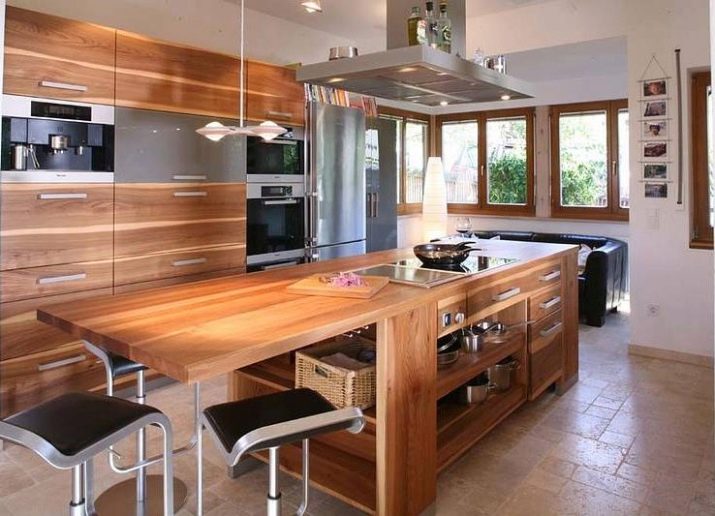
Narrow working surface
If the room is small - the lower cabinets and the countertop that covers them can be made narrower (no more than 50 cm). Some manufacturers go for it, so as not to miss customers. And if on paper such a kitchen looks quite tolerable, then you can really encounter some problems.
- A smaller sink will be required, and only samples with two rings will fit the hob.
- The refrigerator located near the headset will protrude strongly forward. It is not too attractive and cozy looks from the side.
- The capacity of these sections will be less.
- And even less will be the workspace of the countertop.
In such a situation, it is better to solve the problem differently.
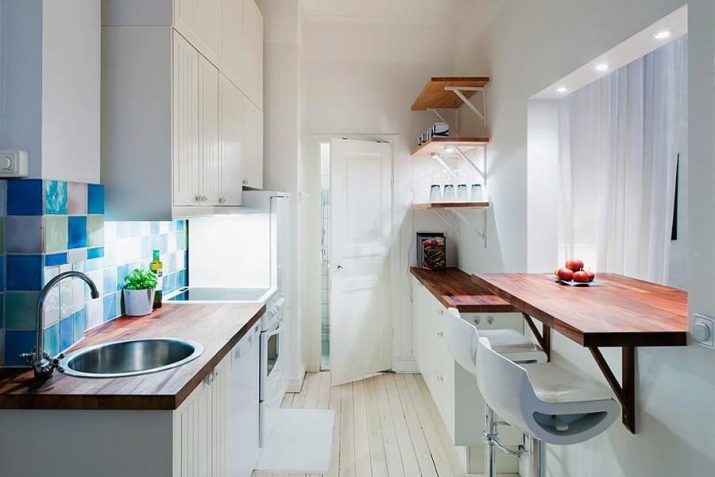
Sometimes part of the lid is kept standard, and part is made less deep. The same method is used in situations where the kitchen set is too long, and also if it goes into a shallow sideboard or pencil case.
This is done by means of a beveled section with a working surface of a similar configuration. It creates a transition from 60 to 40 cm less sharp. To make it look more elegant, it is advisable to use not a beveled tabletop, but with a wave. Only such a method will cost significantly more.
It also happens that they make a narrow part of the corner kitchen. Of course, not the one where the household appliances are located, but with ordinary boxes. Here you can create a height difference, especially if this side is involved in the zoning of the room.
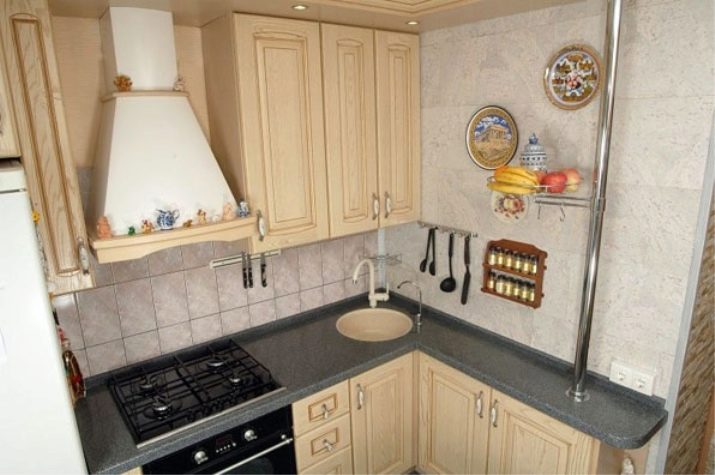
A narrow slab can be used for a bar, but only in a direct configuration.
There is no doubt that there are many ways to deviate from standards, and they are not uncommon. However, before choosing a non-standard option, it is necessary to calculate not only its appearance, but also comfort, utilitarianism and cost.
Choosing the right option
The standard, as you probably already understood, is not always good. Since this is an average option that does not take into account certain features, in particular, human growth, kitchen layout and more.
To create a countertop that is very different in size from standard sizes, you should make an order according to a separate drawing.

The following recommendations will help you consider the main aspects when buying this item.
- Dimensions should correspond to the size of the room. Soviet-era buildings differ in the size of kitchens - they are much smaller than modern ones. Here you need to think about reducing the width of the headset to a convenient value, up to 30-40 cm. The outlets have narrow, but deep and long sinks and plates suitable for new parameters.
- Take into account the layout. Based on the layout option (rectangular, square, narrow room), a corner or frontal placement method is selected.
- Take into account the features and wishes of the home. The height of the tabletop above the floor will affect cooking comfort. The normal height is 85 cm.
About what material to choose a countertop for the kitchen, see further.
